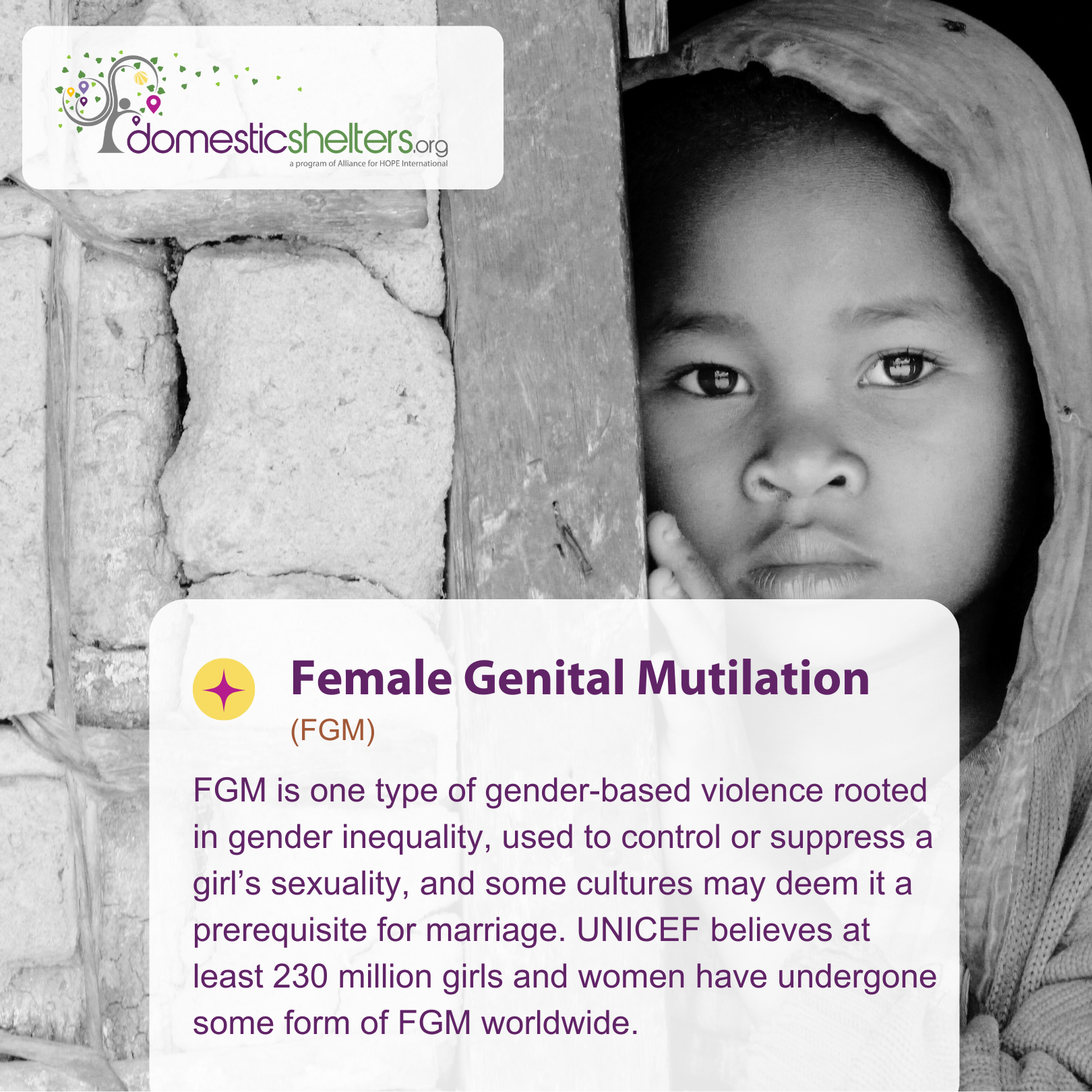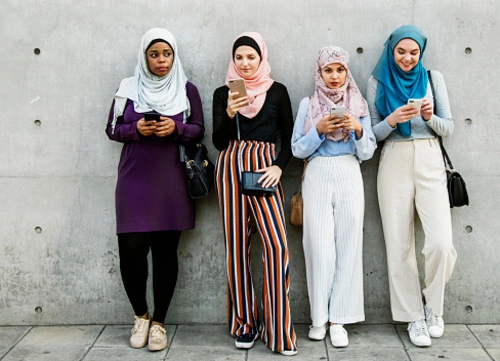1. Select a discrete app icon.

notes
What Is Gender-Based Violence?
The term was created to include any gender in the discussion of harm, but is it really a fair comparison?
- Aug 05, 2024

Gender-based violence is a term used to describe acts of harm that are perpetuated due to someone’s gender. Statistically speaking, women are most often the target of gender-based violence while men are most often the perpetrators. Gender-based violence has come to be associated most closely with intimate partner violence—the abuse women face at the hands of a boyfriend or husband.
“We started with the term ‘battered women,’ and found that limited us to people thinking physical violence,” says Rita Smith, international expert on domestic violence and vice president of external relations at DomesticShelters.org.
“As we helped write laws, other terms were used like ‘domestic violence,’ ‘intimate partner violence’ and ‘violence against women.’ ‘Gender-based violence’ emerged later, reflecting the pressure to take women out of our language because men are abused as well.”
Is Violence Equal for Men and Women?
While it is true that individuals of any gender or sexual identity can be victims of domestic violence, many advocates attest that it is simply not an equivalent comparison.
“Many women live in fear of their partners but it is rare for the man to be afraid his female partner will kill or seriously injure him,” argues Barry Goldstein, a nationally recognized domestic violence author, speaker and advocate. “I like to use statistics but research about the frequency of domestic violence is extremely problematic. Women seriously under report abuse and men exaggerate.”
Statistics say that one in three women have experienced physical violence, rape or stalking by an intimate partner, while one in four men have reported the same. However, gender-based violence isn’t limited to just physical violence. Gender-based violence can be acts of verbal aggression, mental abuse, sexual harm, dating violence, stalking and harassment. The term covers a wide range. It may also include acts far more sinister globally including forced marriage, acid attacks, dowry deaths, bride burning or female genital mutilation.
Global Types of Gender-Based Violence You May Not Have Heard Of
While we likely have all heard of domestic violence and its varied forms: physical, mental, emotional, verbal, sexual, financial, spiritual and reproductive—there are some even more horrific tactics of violence inflicted on women.
Forced Marriage
This involves any union in which one or both parties has not consented. Child marriage is a derivative of this and includes at least one party under the age of 18 being married against their will. Worldwide, it’s believed at least 650 million women have been married before the age of 18, or 28 girls every minute. Coercion, threats of violence or outright violence are often used to force a marriage. Forced marriage is most often found in parts of South Asia and Africa and is considered to be a human rights violation as it violates the autonomy of individuals. Certain cultures accept forced marriage for various reasons—to control or strengthen family associations, to prevent unwanted sexuality, to deal with pregnancy before wedlock, to aid in immigration or to prevent a lineage of poverty. A girl may also be “sold off” to a man to settle a family’s debt or dispute a resolution. Forced marriage often results in a lifetime of rape, abuse and domestic slavery, including forced motherhood. Girls or women who do not accept a marriage may be subjected to murder, also known as honor killing, perceived as necessary after dishonoring a family.
Acid Attacks
Acid attacks are pointed attacks of [mostly] women by throwing acid or another corrosive substance, such as bleach, on the person in order to torture, kill or permanently disfigure them. Acid attacks target women more than 80 percent of the time and, according to experts, are on the rise. They often stem from domestic violence, acts of revenge, after the rejection of a marriage proposal or rebuffed sexual advances. Acid attacks can occur anywhere, though Columbia is known to have the highest per capita rate of acid attacks.
Dowry Deaths
Dowries are typically found in South Asian countries, most notably India, Bangladesh and Pakistan. They are the amount of money or other gifts that a groom and his family demand from the bride’s family in exchange for marriage. Though dowries have been illegal in India for 60 years, they are still an inextricable part of Indian culture. The stress of paying a dowry leads to the suicide or murder of more than 8,000 Indian women yearly.
Bride Burning
This horrific term is a type of dowry death that typically occurs after a wedding when the husband’s family has decided that the dowry offered has not been sufficient. The husband’s family demands more money, gold or consumer goods, like washing machines. If the demands are not met, the husband’s family will encourage the man to douse his wife in kerosene and light her on fire, or, in some instances, the extended family participates as well.
Female Genital Mutilation (FGM) or Female Circumcision
This a human rights violation that typically affects girls in Africa and the Middle East, but may also be found in some countries of Asia, Eastern Europe, Latin America. Some select cases have occurred in Europe, North America, Australia and New Zealand. FGM involves partially or totally removing the female external genitalia or narrowing the vaginal orifice with a covering seal for non-medical reasons. Some girls are subjected to FGM in infancy and many before the age of 15. UNICEF believes at least 230 million girls and women have undergone some form of FGM worldwide. The practice is rooted in gender inequality, used to control or suppress a girl’s sexuality, and some cultures may deem it a prerequisite for marriage.
Does the Term We Choose Matter?
So, at the end of the day, does it really matter what we call it if the more important point is that we’re talking about it? Smith says no.
“I'm fine with using gender-based violence to describe the harm done,” says Smith. “I don't think the term we use will matter in the struggle to get this issue taken more seriously. We've adapted the language, the services, the way we provide the services, and the training all to more fully engage systems and the public to help reduce the violence. Those changes have had some success, yet women and children still die at about the same rate as when I started over 40 years ago.”
Goldstein says supporting a false equivalency between men and women does more than misinform the public and decision makers.

“The failure to understand the gendered nature of domestic violence crimes contributes to the more than 1,500 murders of women every year [in the U.S.]. Millions more women will live shorter lives because of the health consequences from continued exposure to the fear and stress abusers cause.”
What Can We Do About Gender-Based Violence?
Being aware that gender-based violence is an epidemic and spreading awareness with those around you is a solid first step to being part of the solution.
The International Day for the Elimination of Violence Against Women kicks off every year on Nov. 25 and incorporates 16 days of activism, ending on Dec. 10, Human Rights Day. Begun in 1991, the campaign was started by activists at the Women’s Global Leadership Institute and calls for the prevention and elimination of violence against women and girls. Advocacy efforts range from online petitions and social media campaigns to engaging young people and faith-based organizations worldwide through outreach and awareness-raising initiatives. More than 900 civil society organizations globally have joined the effort to make ending violence against women a top priority.
You, too, can start advocacy efforts in your own community. “To Do: Start a Movement” might give you some ideas of where to begin.
In May of 2023 the Biden-Harris administration, in conjunction with the Women’s Bureau, announced the National Plan to End Gender-Based Violence (GBV), the first-ever action plan of its kind in the U.S. It involves seven key pillars to addressing gender-based violence in the U.S. the plan goes into more detail on each pillar, but here’s an overview of what’s involved:
- Prevention. Improve prevention efforts to change social norms that support or condone GBV and to promote healthy and respectful relationships across the life course.
- Support, Healing, Safety and Well-Being. Address disparities and inequities in access to trauma-informed care for GBV survivors from marginalized and underserved communities across the life course.
- Economic Security and Housing Stability. Improve GBV survivors’ economic security through access to good jobs with family-sustaining wages, benefits, and workplace protections, as well as support for business entrepreneurship.
- Online Safety. Enhance and expand federally funded research and data collection on technology-facilitated gender-based violence.
- Legal and Justice Systems. Enhance federal programs that promote access to legal assistance for survivors in criminal, civil, family, immigration, military, and administrative legal systems.
- Emergency Preparedness and Crisis Response. Address GBV and associated risks in federal emergency response and recovery efforts.
- Research and Data. Support innovative research and data collection approaches to improve inclusion of historically marginalized and underserved communities.
Donate and change a life
Your support gives hope and help to victims of domestic violence every day.







